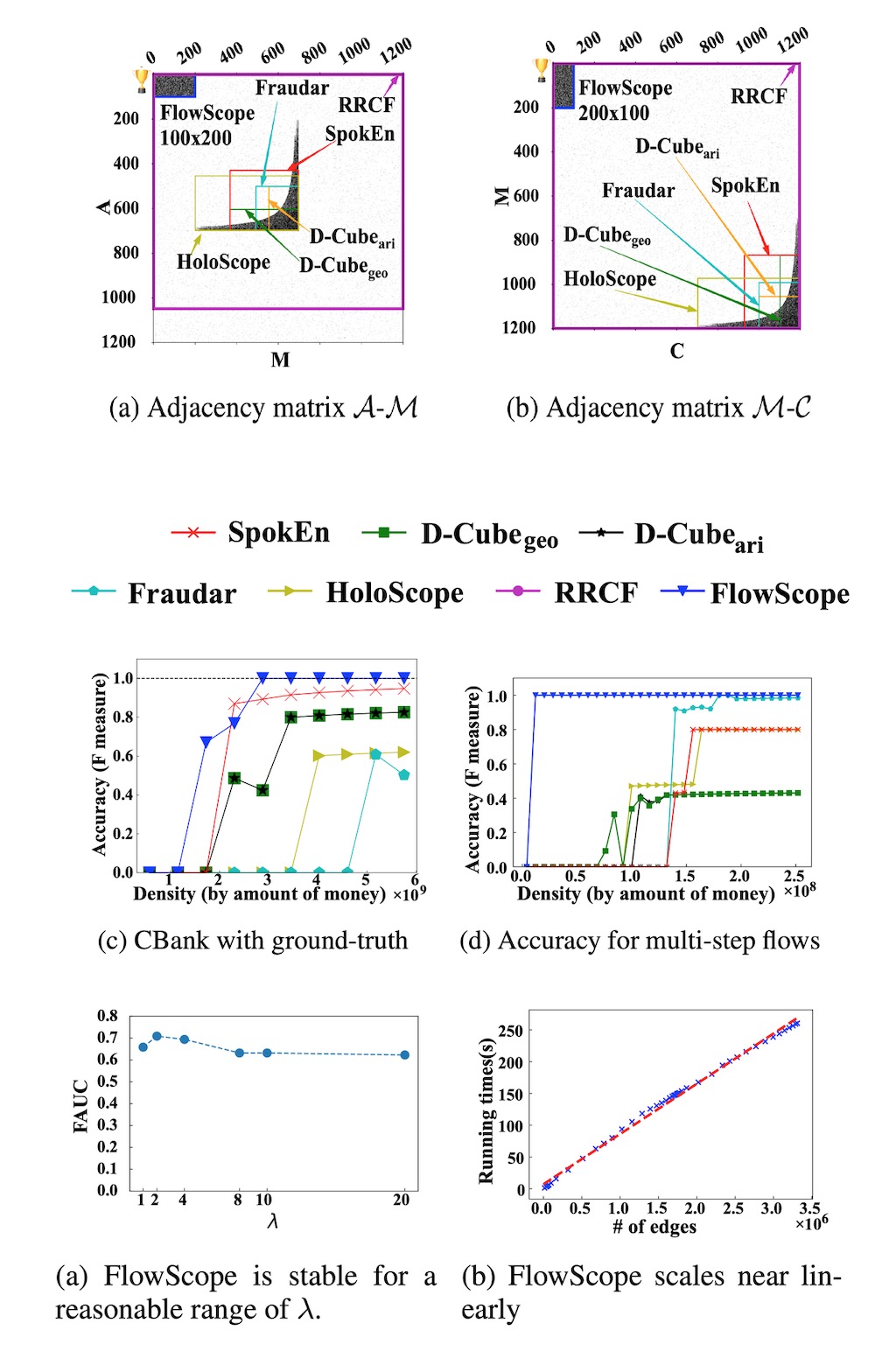·
Implementation code of the algorithm described in FlowScope: Spotting Money Laundering Based on Graphs. and thanks for the contribution of the coworkers , i.e. , Shenghua Liu and Zifeng Li.
FlowScope: Spotting Money Laundering Based on Graphs
FlowScope is developped for ML detection based on multipartite graph, which models the high-volume flows of funds through chains of bank accounts, and detects the complete flow of money from source to destination.
Given a graph of the money transfers between accounts of a bank, how can we detect money laundering? Money laundering refers to criminals using the bank's services to move massive amounts of illegal money to untraceable destination accounts, in order to inject their illegal money into the legitimate financial system. Existing graph fraud detection approaches focus on dense subgraph detection, without considering the fact that money laundering involves high-volume flows of funds through chains of bank accounts, thereby decreasing their detection accuracy. Instead, we propose to model the transactions using a multipartite graph, and detect the complete flow of money from source to destination using a scalable algorithm, FlowScope. Theoretical analysis shows that FlowScope provides guarantees in terms of the amount of money that fraudsters can transfer without being detected. FlowScope outperforms state-of-the-art baselines in accurately detecting the accounts involved in money laundering, in both injected and real-world data settings.
Code in FlowScope-AMC:
designed for detecting money laundering with one middle layer M
Code in FlowScope-AM1M2C:
designed for detecting money laundering with two middle layers M1 and M2.
for usage:
python2 FS.py input_dir output_dir block_num
parameter specifications:
input_dir: the path to input data;
output_dir: the path to output result;
block_num: numbers of suspicious transactions you want to detect;
input data: decribe the transaction between two adjacent layer, which should be named as fs1.csv, fs2.csv ... fsn.csv .
fs1.csv: describes the transactions between source layer and the first middle layer.
...
fsi.csv: describes the transactions between current i-th layer and the next layer.
...
fsn.csv: describes the transactions between last middle layer and the destination layer.
ouput result: the most suspicous accouts in each layer.
rown.csv: the source account of the n-th suspicious transactions;
coln.csv: the destination account of the n-th suspicious transactions;
midk_n. csv: the middle account in k-th middle layer of the n-th suspicious transactions;
@inproceedings{li2020flowscope,
title = {FlowScope: Spotting Money Laundering Based on Graphs },
author = {Xiangfeng Li, Shenghua Liu, Zifeng Li, Xiaotian Han, Chuan Shi , Bryan Hooi, He Huang, Xueqi Cheng},
booktitle = {Proceedings of the AAAI Conference on Artificial Intelligence},
year = {2020},
organization = {AAAI}
}
